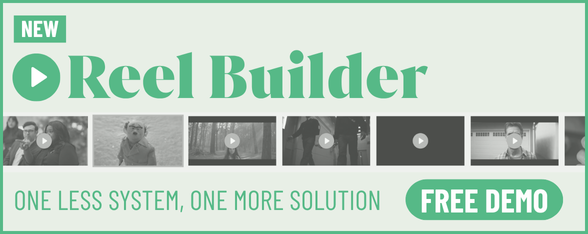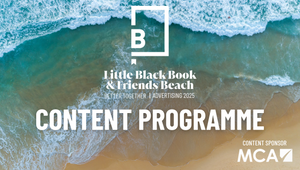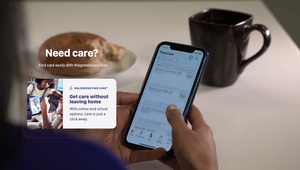
Is IP the Next Big Agency Product?

In Anthony Yell’s vision of 2035, the traditional creative brief may be obsolete. Instead, brands will subscribe to “creative systems” built on decades of agency IP – systems capable of turning live audience insights into market-ready work without a single meeting.
"Take BBH or Razorfish," says Anthony, who is CCO at Razorfish. "[They have] long histories of creating a specific point of view in all their work. There are so many you can learn from – the creativity of that legacy – then bundle that up into a creative team that brings that point of view to whatever you want made.
“So then it’s just: what is that worth – the IP of BBH over the last 45-50 years?”
As those capabilities evolve, they won’t just be in the hands of agencies or platforms – they’ll be accessible to anyone with the right tools. The reality with the democratisation of creativity, says Anthony, is that everybody – even more people than at this moment in time– can become a ‘creator’; a much broader pool of people can have access to the necessary tools to do and build extraordinary things.
“Then it becomes: what creates the difference?” he adds. “I feel confident that in the future, the thing that will shine from our industry – specifically for creatives more broadly – is creative intelligence.”
Anthony cites data from the World Economic Forum’s Future of Jobs Report 2025, which ranks creative thinking among the most essential skills for 2030, placing it in the ‘top-right quadrant’ of its skills outlook – core today and growing in importance over the next decade. “That’s going to be the power: creative thinking and the orchestration of ideas across these new platforms to be able to scale.”
“All the tools are working to make you better,” says Anthony of the technology spearheading his predictions. “Better at research, better at briefing, better at creative, better at production, better at optimisation. The list goes on.”
Within the creative space, these tools are set to ever-further level the playing field – and with that the future of creative direction changes too, more geared towards, in Anthony’s eyes, ‘shaping systems instead of headlines’. “I don’t necessarily have to be a writer to plausibly, in the future, write the next great novel. I don’t need to learn how to code to create a five-star app. I don’t have to have gone to film school to generate – plausibly in the future – a feature-length film. The list goes on. You and I could create a chart-topping hit.”
But competition will be fierce. While agencies license the creative engines trained on their own work, so too could platforms like Meta, Amazon and TikTok – potentially faster, cheaper, and fully automated. “There will likely be a movement in the orchestration of who does what, why, and when – between platforms, agencies, and technology companies that have creativity and automation.” In a world where creative engines can be trained, licensed and deployed across multiple platforms, the question of who actually made the work becomes harder to answer, and more important to resolve.
And as these ecosystems of platforms, agencies and technology companies jostle for creative and commercial dominance, questions of ownership, attribution and value will only grow sharper. Anthony predicts that this will drive the rise of “creative provenance protocols” – frameworks designed to trace where ideas come from, who contributed to them, and which technologies were used, ensuring credit, transparency and, in many cases, royalties in an AI-driven market.
“At some point, award shows like Cannes are going to start asking the questions: who did this, and where did it come from?” says Anthony.
Credits on campaigns are obviously nothing new, as agencies and production partners – and the people within those organisations – are rightly noted for their specific roles in bringing work to life. But because this is such a new space, Anthony says, ensuring a “through line” will be essential – a transparent record of where an idea came from and the people, organisations, and technologies involved in bringing it to life.
“Very soon, there will be 100% synthetic everything,” he predicts. “I assume they’ll want to monetise that and create recognition for work generated in that space, as a way to highlight what’s possible – both as a counterpoint and counterbalance to hybrid work, or work that is 100% human.
“I don’t know how long purely human work will exist, because in reality all work uses technology and always has. In that sense, provenance would mean: what’s the traceable precedent of where it all came from? Some companies are already doing this.”
It’s when that provenance is absent, he says, that friction is most likely to arise. “Some of the other systems cause friction because someone creates something unique and expressive – something ownable – and suddenly there’s work out there that looks a little too much like it. So I think all of that is undoubtedly coming, because in the absence of it, it’s very scary, to be honest with you.”
When asked which future trend feels closest to becoming reality, Anthony doesn’t hesitate. “I’m bullish on AR and spatial. There’s just too much investment going into it.”
He sees augmented and spatial technologies as central to the next wave of brand experiences – and potentially reshaping how audiences even interact with creative work. “A technology company recently launched glasses with an updated version of the Control Labs neural interface. It was basically just a thin band – already miniaturised to the point where people could wear it without feeling like they had this big piece of technology on them.”
He says these advances aren’t fully there yet, but the scale of investment – and the progress already made – is hard to ignore. “With the amount of money being spent, and what we saw with these, it reminds me of when we went from Nokias – if you remember those – and suddenly got texting. Then someone put a keyboard on the screen, and we pivoted from phone to smartphone to then this whole new thing.”
It’s a reminder of how quickly technology can leap forward when the conditions are right. “Ten years is a long time,” says Anthony. “I have a feeling some of these developments will pop up, and they’ll be related. I can see that for some organisations putting the dollars behind them, they’re making sure they’re connected. They want to do all of it at once – fundamentally change the game – rather than just do one small part and leave the rest to others. If they can do all of it, think of the advantage they’d get.”
As our conversation winds down, I ask Anthony what advice he would give to a young creative looking to prepare for the future. The first thing, he says, is that they’ve chosen the greatest industry to be in – one that celebrates creativity, which he sees as the foundation of human experience. It’s a great first step.
“Creatives are naturally curious, so never stop being curious,” he says. Mastering one skill or one type of communication isn’t enough, because a career will almost certainly outlast the technology that dominates at any given moment. He points to the arrival of television as a reminder: radio didn’t vanish, and TV is still relevant now, but those who stopped evolving were left behind. The same principle applies to whatever medium or technology comes next.
“If you stay open-minded, super curious, love creativity in all forms, and want to figure out how to use new and emerging mediums, technologies, and ways of making great work, you’ll be set,” he says. “You’ll probably produce amazing work nobody’s ever thought of – and hopefully you’ll get paid handsomely for it.”
Read more interviews with US agency leaders here.
Read more from Addison Capper here.















